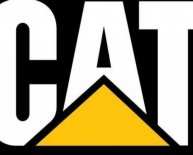
Tools of Construction
Are you a project manager looking to try your hand at a role in the construction industry? At first glance, you may think construction project management takes the same skillset as any other PM career. Sure, it follows the traditional five phases of project management: initiation, planning, execution, performance and monitoring, and closure. But that’s where the similarities end. Construction project management diverges from a typical PM role by demanding and incorporating extensive knowledge of the construction industry, a unique and complicated field. Construction PMs average around 120 responsibilities, according to The Construction Management Association of America, which means they have to be more strategic and thoughtful in working with a slew of moving parts and constant change.
To ensure each responsibility is met and every architect, contractor, and supplier remains on schedule and budget, effective construction PMs should utilize tools and strategies that streamline their work. Fortunately, construction management has become more technical with the development of new tools to simplify many processes. It’s how you implement those tools that counts. These five strategies go beyond PM basics to prepare you for the intricacies of the role and direct your efforts toward success.
1. Create a flow of communication
Among the most important elements of all project management, communication is essential to every phase of any construction project. Good news and bad news are equally important when preparing and implementing a build, so you need to establish a flow of communication with everyone on the ground — and every stakeholder and supplier in the plan. This transparency will make the process smoother and will reduce the number of emails and phone calls whenever a problem arises.
One of the simplest ways to create a flow of communication is a collaborative work management (CWM) tool. By syncing comments, attachments, and calendars, you can monitor news, budgets, and scheduling changes as they occur. A good CWM tool also allows you to relay these changes to other managers and accounting offices in real time, providing a nearly email-free method of project management. That means more time for you to spend at the construction site meeting contractors to coordinate the next stage of work.
2. Make a habit of continuous planning
Planning may be the second of the Project Management Institute’s five phases of project management, but construction project managers should start planning long before actual construction begins, and continue revising and developing plans until the project ends. The design, pre-construction, and procurement stages of a construction project each require extensive planning — and each may need to be revised as the next stage unfolds. Anything can happen at a construction site. If you encounter unexpected environmental problems during the pre-construction phase, the design may need to change. Even slight adjustments can affect the overall plan and timeline.
This remains true during the actual build. You will be working with seasoned professionals, often with decades of experience in electrical engineering, plumbing, scaffolding, and carpentry. While your contractors should be trusted, they still need focused direction to coordinate their efforts with each other. You’ll often need to work with them throughout the timeline to develop and refine plans as delays and equipment failures arise. Like any PM, you will execute and monitor developments, but the planning never ends in construction project management. Collaboration shouldn’t either.
3. Observe and ask questions
There is no industry in which PMs will be found just sitting at their desks, removed from the project and his or her team. Every good project manager becomes an integral part of the process, working figuratively and literally alongside others. Construction project management requires more attention and integrated effort than most industries, because the work is so physical. Field elements can drastically affect the workflow of construction projects. There will be many times when you need to actually see an issue in person before you can resolve it.
Familiarizing yourself with the construction site and the duties of every professional working under you will make you a better project manager. Construction is a constantly evolving industry, with new equipment, practices, and advancements every year. You need to continually educate yourself and learn from others in order to administer and manage a successful project. A great deal of communication may be streamlined, but the work still requires regular site visits and conferences with the contractors and designers on the ground.
4. Use tools to monitor costs and budgets
Most PMs have to think about money constantly, but the permits, wages, materials, and equipment of construction projects in particular are often exchanged between an array of financial sources. From the initial bidding process to the project closeout, construction PMs are responsible for tracking and monitoring all costs, especially as they relate to initial budgets. Ideally, you will have an accounting department for managing contractor invoices, but even then, you have to work alongside your accountants to ensure all direct and indirect costs are recorded.
Considering every other responsibility of a construction project manager, tracking and monitoring finances manually without the assistance of software isn’t practical — or feasible. Even relatively small construction projects contain hundreds of moving parts and individual costs, so to remain effective you need to use software that can also manage costs and budgets. A good CWM tool should allow you and other collaborators to input costs, budget changes, and other calculations to keep track of your project’s finances, alleviating the need to coordinate with every participant or to calculate your budget. Additionally, integrating DocuSign reduces time spent collecting signatures for every invoice, which means you and your contractors can devote more attention to the task at hand.

















